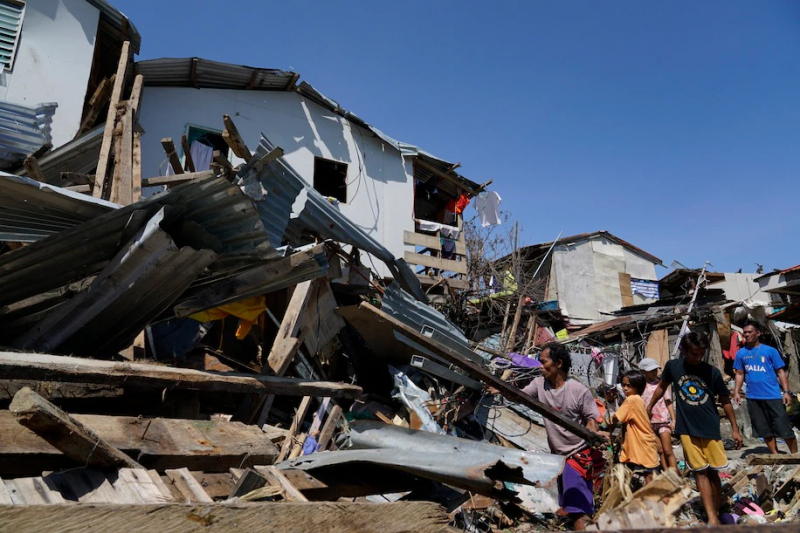Typhoon Rai climbs as affected Filipinos ask for help
Residents of Surigao del Norte and Dinagat provinces say they have not yet received help from the national government two days after the disaster.

The death toll from the strongest typhoon to hit the Philippines this year has risen to 75, official tallies showed on Sunday, as the government struggles to deliver emergency food aid to the most devastated areas of the country.
More than 300,000 people fled their homes and beachfront resorts as Typhoon Rai ravaged the southern and central regions of the archipelago.
The storm ripped off roofs and toppled concrete power poles while knocking out communications and electricity, making it difficult to receive updates from some areas.
Arthur Yap, governor of the popular tourist destination Bohol, said on his official Facebook page that mayors on the devastated island had reported 49 deaths in their towns.
That took the overall number of reported deaths to 75, according to the latest official figures. But with some areas still unreachable by emergency and disaster management staff, the deaths could still potentially rise.
Yap said 10 people were still missing on the island, and 13 were injured after the storm smashed into the country Thursday as a super typhoon packing wind speeds of 195 kilometres per hour (120 miles per hour).
“Communications are still down. Only 21 mayors out of 48 have reached out to us,” Yap wrote on social media, raising fears the death toll could rise in the flood-hit province.
Al Jazeera has learned that in some parts of Bohol, residents were forced to climb up their roofs as water rose early on Friday.
Thousands of military, police, coast guard and fire personnel are being deployed to assist in search and rescue efforts in the worst-affected areas.
Transport Secretary Arthur Tugade also said in a statement on Sunday that President Rodrigo Duterte has ordered to direct the needed resources to help those in need.
“Rest assured, we will deliver,” Tugade said.
On Saturday, residents of Surigao City, capital of Surigao del Norte Province, told ABS-CBN news channel that many of them who have lost their homes have yet to receive help from the national government two days after the devastation.
“We would like to request to the national government to intervene, to help us out here. We do not have any communication as of now. The food that we have prepared for the evacuees have been spoiled because of the typhoon,” Surigao del Norte Vice Governor Geed Gokiangkee told ABS-CBN.
In the neighbouring island province of Dinagat, Vice Governor Nilo Demery was also quoted as saying on Saturday that an estimated 95 percent of his area was destroyed. At least six people have been reported killed in the areas already reached by provincial authorities, but many parts of the province were still inaccessible.
Demery had to travel to Surigao City to seek help for his province because communications lines were cut off. Demery told reporters that he is worried that food would run out in his province.
A Philippine Navy ship carrying goods and other relief would depart for Bohol on Monday, Yap said, after he earlier declared a state of calamity on the island.
There has also been widespread destruction on Siargao, Dinagat and Mindanao islands, which bore the brunt of Rai when it slammed into the Philippines.
Aerial photos shared by the military showed severe damage in the Siargao town of General Luna, where many surfers and holidaymakers had flocked ahead of Christmas, with buildings stripped of roofs and debris littering the ground.
Dinagat Governor Arlene Bag-ao said on Saturday the damage to the island’s landscape was “reminiscent if not worse” than that caused by Super Typhoon Haiyan in 2013.
Haiyan, which is called Yolanda in the Philippines, was the deadliest cyclone on record in the country, leaving more than 7,300 people dead or missing.
Rai’s wind speeds eased to 150km/h (93mph) as it barrelled across the country, dumping torrential rain that inundated villages, uprooting trees and shattering wooden structures.
It emerged over the South China Sea on Saturday and headed towards Vietnam.
The Philippines – ranked one of the world’s most vulnerable countries to the impacts of climate change – is hit by an average of 20 storms and typhoons every year, which typically wipe out harvests, homes and infrastructure in already impoverished areas.

